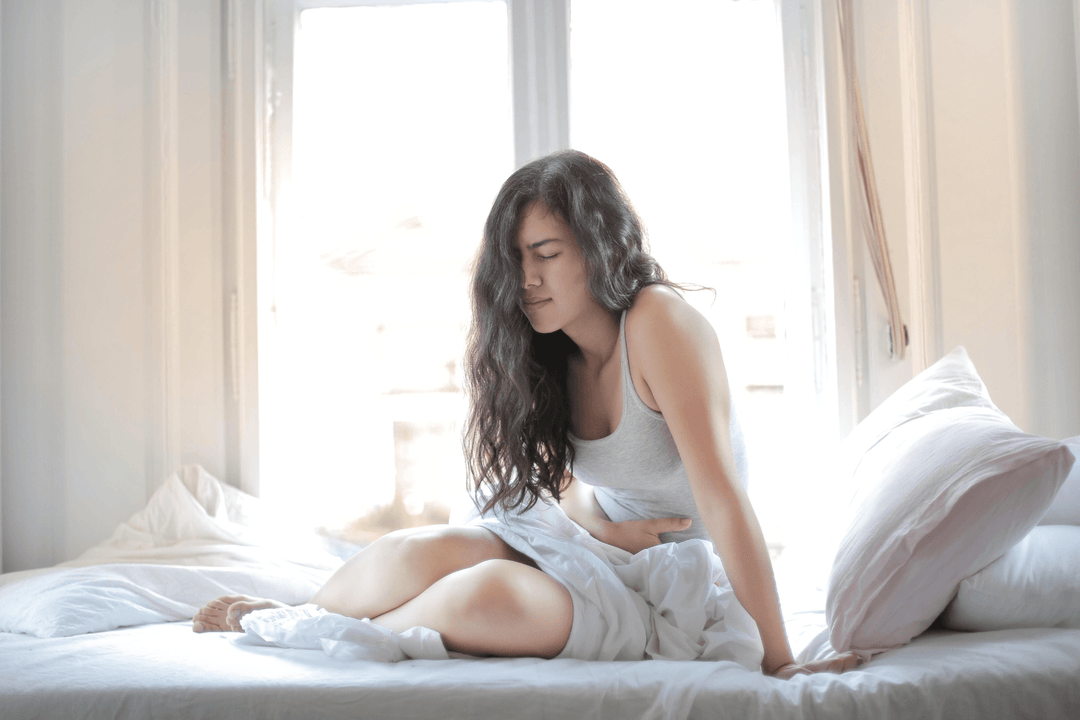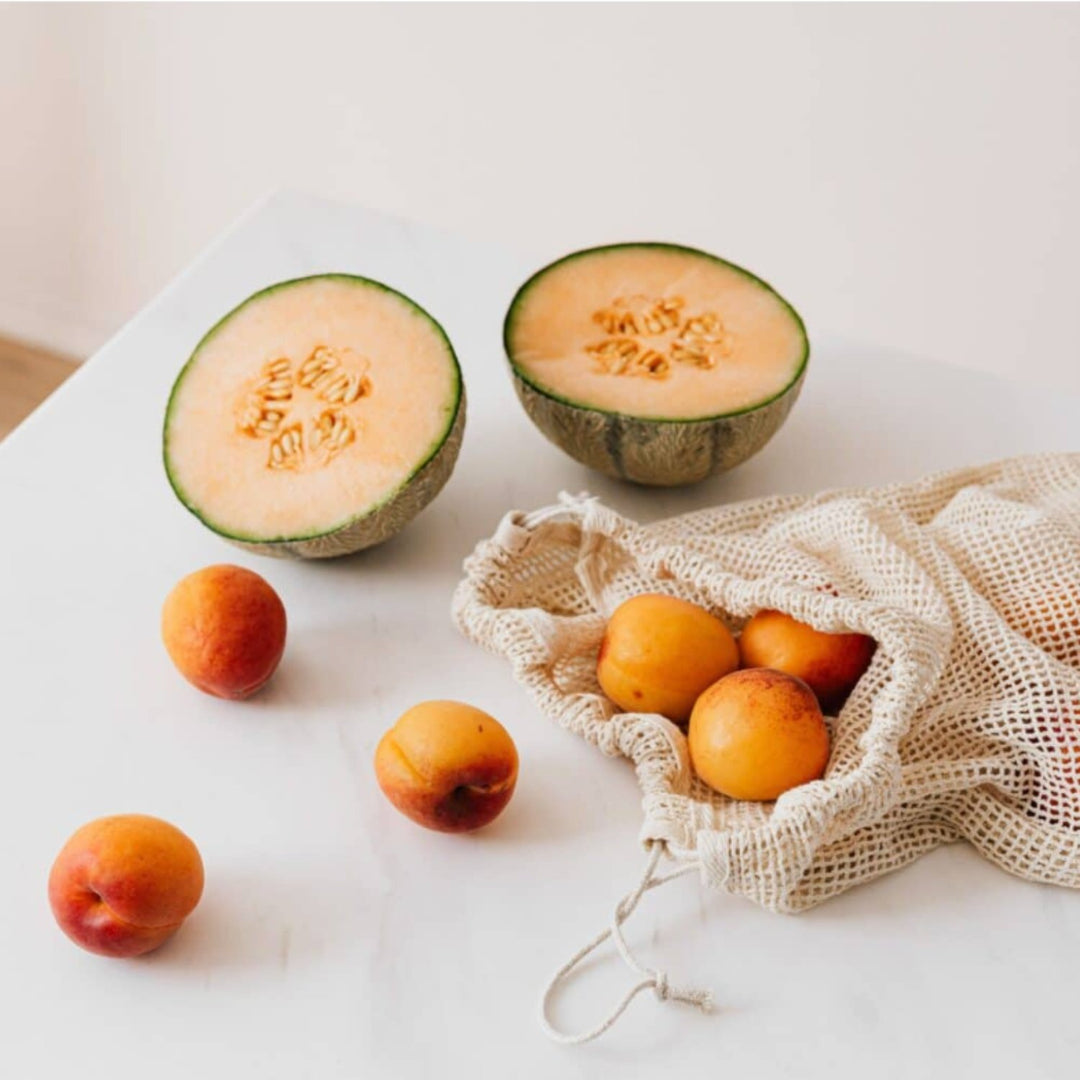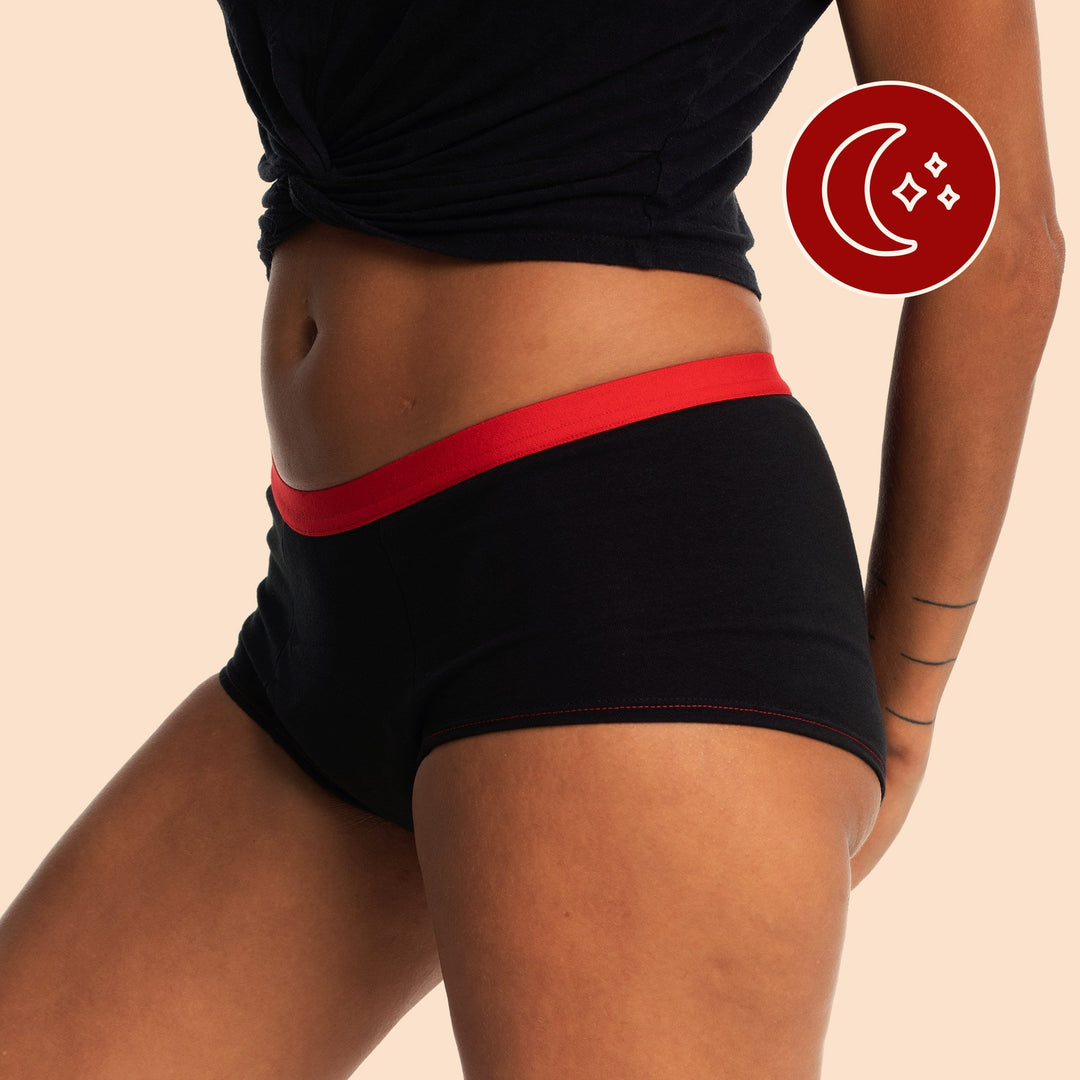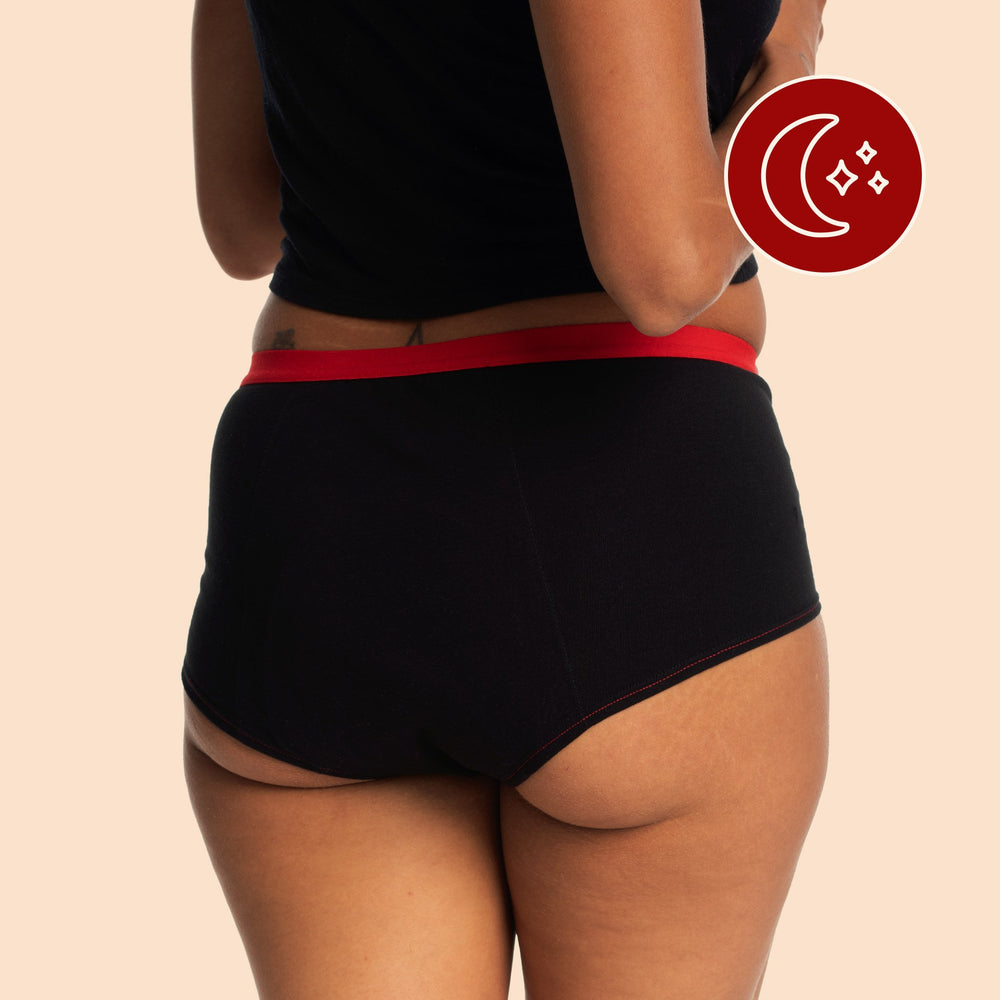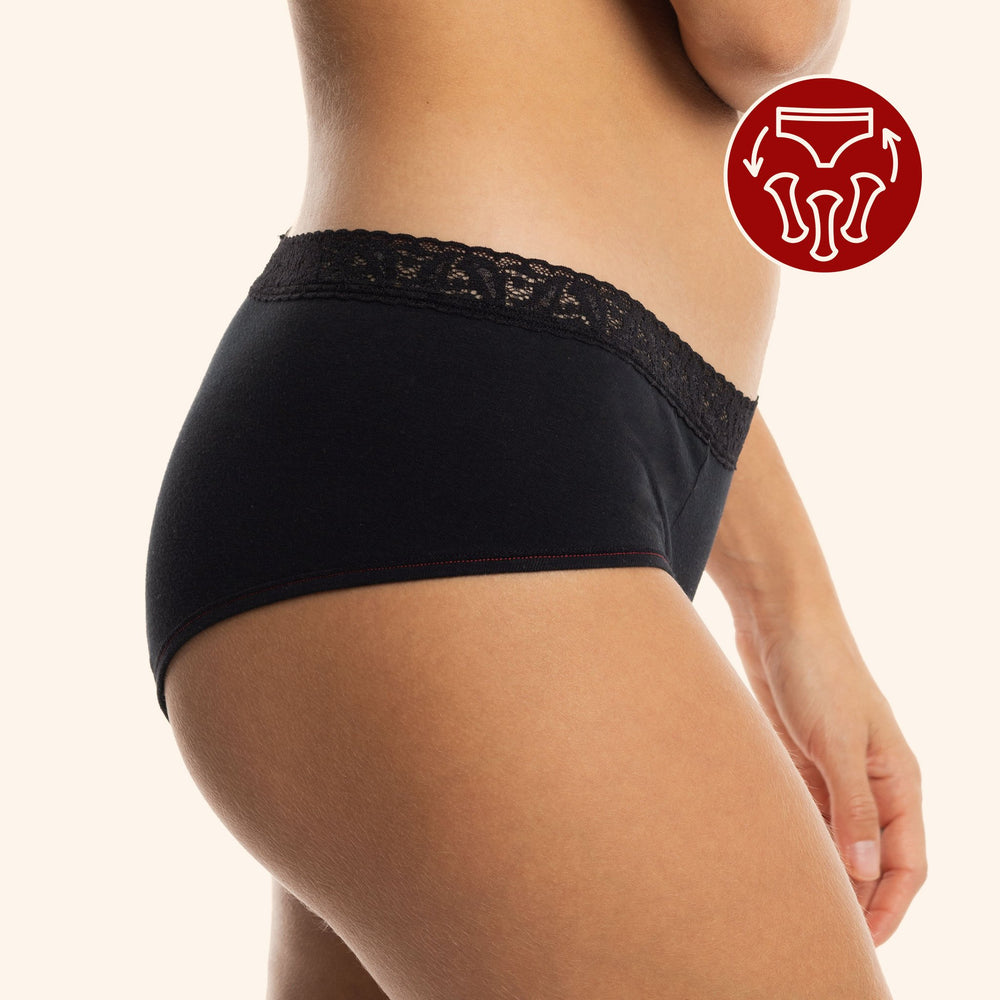
In a society that tends to normalize menstrual pain, endometriosis is a silent and still little-known disease. To open a dialogue and shine some light on it, our team interviewed Marie-Josée Thibert, founder of Endometriosis Quebec and herself a sufferer of endometriosis. She generously shared her experience, her vision, and a few tips for relieving pain absent a definitive treatment.
1. What's endometriosis?
If we skip the big medical terms, endometriosis is a chronic inflammatory gynecological disease that has consequences throughout the body, not just the menstrual cycle. The exact causes aren't yet known, but they're believed to be genetic, immunal, and hormonal, among other possible causes. It's a disease that can be very painful. Most people who have it experience significant pain. But some people, on the other hand, are asymptomatic. (Not me, unfortunately!)
More specifically, endometriosis is when endometrial-like tissue – the tissue that lines the inner lining of the uterus – is implanted for unknown reasons outside the uterus and on nearby organs. The endometrium is what breaks down and causes bleeding when there's no fertilization . . . and yes, you guessed it, that's menstruation!
This tissue, no matter where it is in the body, reacts to hormonal fluctuations in the cycle and bleeds every month. When menstruation happens outside the uterus, the blood has no way out of the body. So the detached endometrial cells irritate the organs, accumulating and creating cysts, scar tissue, and adhesions that connect the organs together and cause pain . . . ouch! Isn't there already enough menstruation going on in our bodies?
Each case is unique, which adds a degree of complexity. Endometriosis is usually found on the ovaries, fallopian tubes, bladder, intestine, kidneys, and ligaments supporting the uterus. In more severe cases, it's found on the lungs, diaphragm, arms, or thighs. Very rarely, it's found at the level of the heart or brain. Endometriosis is often thought to be related to painful periods, and it is, but it's also much more than that. If left untrearted, it can damage internal organs.
Endometriosis isn't a fatal disease, but it has ramifications in all spheres of life: private, social, professional, intimate, psychological . . . you name it! Besides being very painful, it's also relatively unknown, invisible, and wrapped up in myths and taboos. But just because it isn't widely known doesn't mean it's not common! It affects 1 to 2 women in 10 as well as an unknown number of trans or non-binary people (people born with a uterus). To put that into perspective, in Canada, we're talking about more than a million people.
2. What's it like to spend a day in the life of someone suffering from this disease?
Each case is unique, so it's actually a bit tough to describe a day in the life of a person with endometriosis. Personally, I've gone through all kinds of phases over the last 30 years. Still, I think we can say that it often feels like a roller coaster. People struggle to get out of bed in the morning. They experience inflammation, chronic fatigue, pain during and after menstruation, pain during and after sex, and gastrointestinal or urinary problems. They also experience diffuse, radiating pain and sudden pain that can leave them breathless.
Add to that the stress that comes from all the wandering from doctor to doctor that a lot of people experience, not to mention a lack of understanding from loved ones when a sufferer cancels an event, especially if they were in top shape the day before. Then there's judgment at work, fertility challenges, and on and on it goes. Despite all that, I truly believe that the more we talk about it, the sweeter our daily lives can be.
3. Who does endometriosis affect?
In half of cases, endometriosis occurs in people younger than 20. The Endometriosis Association registry in the United States indicates that 38% of people with the disease had symptoms before they turned 15.
I started experiencing my first symptoms when I was 14. My diagnosis came 11 years later, when I was 25. Eleven years wondering what was going on. . . . How crazy is that?
4. Why do you think this disease is so little known and seldom discussed?
There are a bunch of reasons. Daily pelvic pain is associated with different diseases. It's not always easy for doctors to demystify abdominal pain. Figuring out what's going on requries a whole lot of communication between patient and professional. And by "communication," I also mean a lot of deep listening on the part of doctors!
Also, we can't ignore the fact that endometriosis still impacts a few taboo areas of life: menstruation, sexuality, and intimacy. And unfortunately, menstrual pain is still too often considered normal not just in the eyes of some doctors but also of people suffering from the disease.
Finally, it's difficult to access specialized care. Not all doctors and gynecologists are trained to diagnose endometriosis. You have to find them. And obviously, living in a big city will help you there. That's the reason EndoAct Canada is advocating for a endometriosis action plan. They want to make sure people across Canada have the right care in the right place at the right time. Slowly but surely, as they say!
5. Are there any herbs or natural remedies that can alleviate pain caused by endometriosis?
Oh yes, there are! I'll refer you here to two people I absolutely adore who spread wonderful content about allied plants: Mélanie Roy, a sexology graduate, naturotherapist, and hormonal yoga therapist, and Sarah-Maria Leblanc, a clinical herbalist specializing in women's health who's written an article about plants and endometriosis.
There's also a tonne of practices you can harness, things like hormonal yoga therapy, dietary changes, adapting your movements based on much energy you have,, and things like that. These practices help reduce stress and inflammation, and they also help you balance your hormones. Apart from them, people can also try alternative medicine, things like acupuncture, pelvic physiotherapy, osteopathy, herbalism, and sexology.
The key is first getting to know your body by keeping a logbook for keeping track of symptoms and their intensity, frequency, and location as well as what you're eating, what you're doing, and how you're feeling. It's hard to know what you need if you don't understand your body. Journaling can be a great way to get to know yourself and a great tool when you work with knowledgeable professionals. The more information they have about you, the easier it'll be to implement measures that'll help improve your quality of life. We have get to know ourselves if we want to make the right choices, communicate well with the team around us, and make informed decisions.
6. What advice would you give to people with endometriosis?
- Never stop informing yourself.
There's no single means of treating endometriosis. There's no definitive treatment. But everyone has the power to make a difference in their lives through the implementation of personalized measures. Getting informed is the key to making the right decisions.
- Surround yourself with the right people.
This matters in your medical life just as much as your personal life. Here, too, you'll sometimes have to make difficult choices, but they'll be beneficial for your overall health.
- Turn to the community.
Rely on content from organizations like Endometriosis Quebec to open a dialogue with your family, friends, and employer. Doing this is a huge act of awareness, and it frees you from isolation. No matter what, you don't want to be suffering alone.
- Make yourself a top priority.
This is what changed my life the most. Figuring out positive little things you can regularly do will help you feel empowered at the end of the day, week, and even the year! I'm convinced that accepting your story and loving yourself in it is the best thing you can give yourself. Period.
About the author: Marie-Josée Thibert
Marie-Josée Thibert has been a communications advisor for the Montreal Health Network since 2009. In parallel, in 2015, she founded Endometriosis Quebec, an information portal, awareness movement, and support community for people with endometriosis. Marie-Josée is also a member of Endo-Act Canada, a collective of patients, doctors, and researchers formed in 2020 and committed to raising the federal and provincial governments' awareness of the lives of people suffering from the disease. On March 2, she released her first book, co-written with the founder of Live 100 Fibroids: Endometriosis and Uterine Fibroid: From Suffering to Action.. Marie-Josée is also a patient-partner for the endometriosis research program at the CHUL of the Quebec Research Centre. She wants, more than anything, to transform things for future generations and give affected people power over their health and whole lives!






